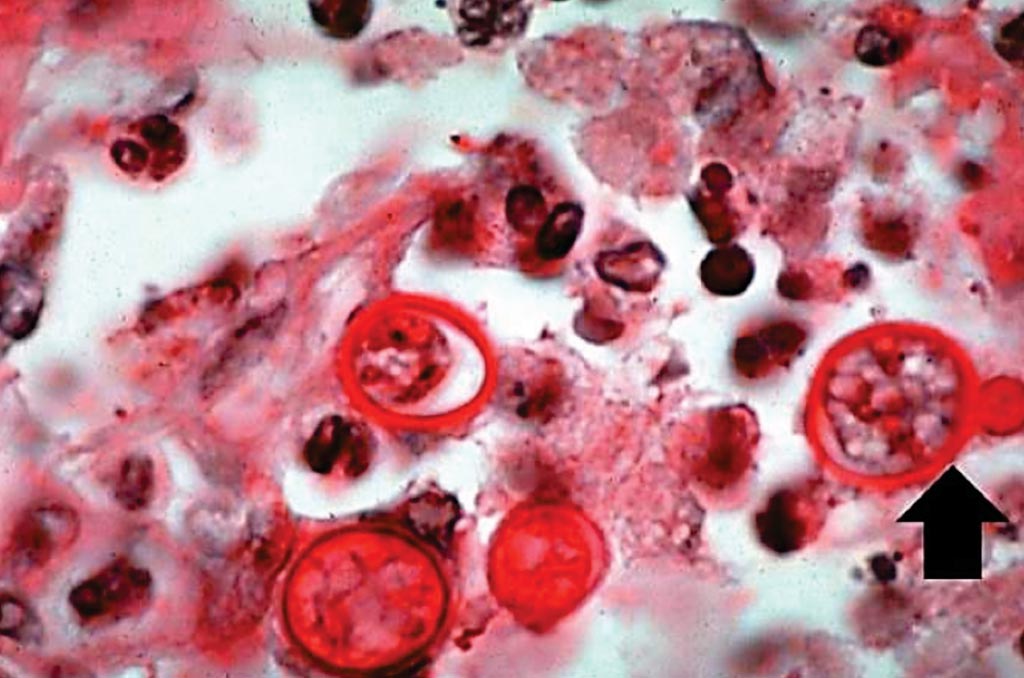Immunocompromised Patients at Risk for Blastomycosis
By LabMedica International staff writers
Posted on 28 Sep 2017
Most invasive fungal infections in immunocompromised patients are caused by Zygomycetes, Aspergillus, and Candida, but literature about Blastomyces infection in immunocompromised patients has been sparse.Posted on 28 Sep 2017
Blastomycosis is an infection caused by a fungus called Blastomyces. The fungus lives in the environment, particularly in moist soil and in decomposing matter such as wood and leaves. People can get blastomycosis after breathing in the microscopic fungal spores from the air. Although most people who breathe in the spores do not get sick, some of those who do may have influenza-like symptoms, and the infection can sometimes become serious if it is not treated.

Image: A photomicrograph showing Blastomyces organisms stained with Periodic Acid Schiff (PAS). Note the budding organism (arrow) and the underlying pyogranulomatous inflammatory reaction in the background (Photo courtesy of University of Alabama at Birmingham).
Scientists at Rush University Medical Center (Chicago, IL, USA) reviewed blastomycosis in cytological and surgical specimens, paying special attention to infections in immunocompromised patients. They searched their institution’s pathology files from 1994 to January 2017 for blastomycosis, and reviewed the clinical and pathologic data in detail.
The team reviewed medical history and determined immune status for each patient. Immunocompromised patients were considered to be those who had had a kidney transplant, myelodysplastic syndrome/lymphoma/leukemia, some other malignancy, diabetes mellitus, human immunodeficiency virus, viral hepatitis, sarcoidosis, end-stage renal disease, or rheumatoid arthritis. The cases in this study included 25 males and 13 females, ranging in age from 13 to 76 years. For each of the 39 cases in this study (from 38 patients), diagnosis was based on morphologic characteristics, additional studies including Periodic Acid Schiff (PAS) and Grocott Methenamine Silver (GMS) stains, and microbiology cultures when available.
The investigators reported that six of the cases in the study were cytological material, including five bronchial lavages and one brushing. A total of 32 were surgical pathology cases including 11 lung, eight soft tissue, five bone, four skin, two lymph node, one brain, and one thoracic mass. Overall, 28 patients (74%) were immunocompromised. Seven patients had disseminated infections. Thirty-four cases had one concurrent culture or more of which nine were negative.
Christine Rupcich, MD, a pathologist and lead investigator of the study, said, “Almost two-thirds of patients in our study with blastomycosis were immunocompromised. The most common location for blastomycosis infection was lung, followed by soft tissue and bone. Cultures were positive in 74% of patients with a pathology diagnosis consistent with blastomycosis.” The study was presented on September 6, 2017, at the Annual Meeting of the American Society for Clinical Pathology (ASCP) held in Chicago, IL USA.
Related Links:
Rush University Medical Center














